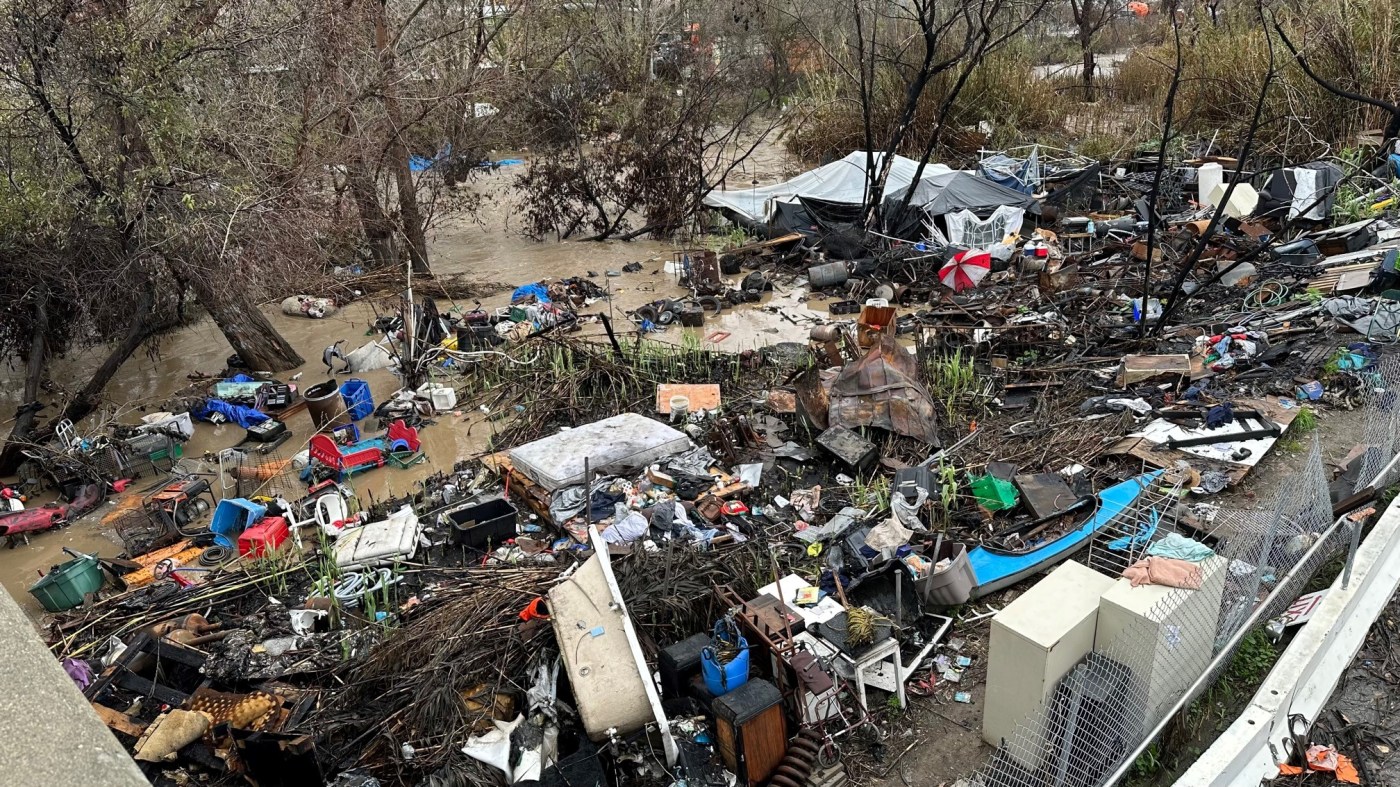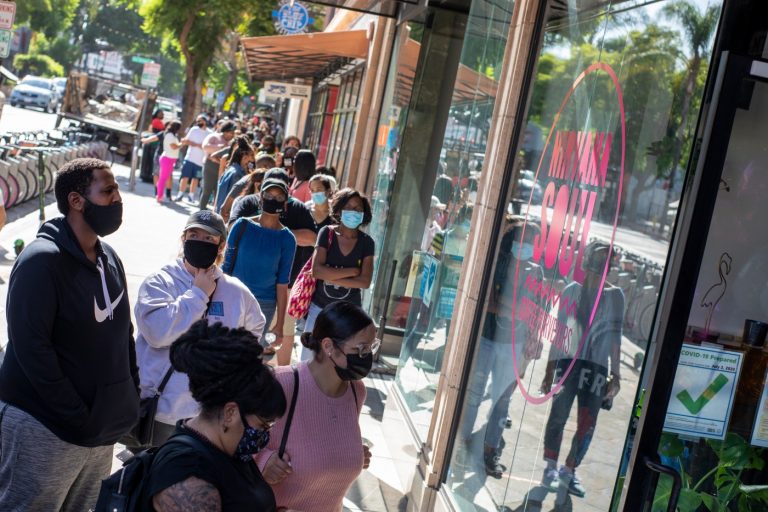Saying it desperately needs more tools to clean up homeless encampments that are increasingly fouling the environment and putting its employees at risk, Silicon Valley’s largest water agency is proposing a new ordinance that would ban camping along 295 miles of creeks in San Jose and other parts of Santa Clara County.
The Santa Clara Valley Water District, a government agency based in San Jose, has spent $2.9 million since last July removing 12,330 cubic yards of debris — enough to fill 1,230 dump trucks — from Coyote Creek, Guadalupe River, Los Gatos Creek and other South Bay waterways.
But the problem is worsening, say officials at the water district. Homeless people have polluted creeks with hazardous materials, piles of trash and human waste.
They have trapped endangered steelhead trout with shopping carts, cut down trees, started wildfires, left discarded needles, and built makeshift structures in areas prone to winter flooding. Water district workers also have been facing growing numbers of threats of violence when they venture into creeks to do their jobs.
“It’s become significantly worse,” said Jennifer Codianne, the district’s deputy for watershed operations and maintenance. “After COVID we’ve seen a lot more encampments in the waterways. The impacts have been devastating.”
The proposed ordinance would subject violators to fines of up to $500 and 30 days in jail. The district will discuss the issue on Friday at a meeting of its Environmental Creek Cleanup Committee. A vote before the district’s full board is expected in June.
There are roughly 800 miles of creeks and rivers in Santa Clara County.
The water district, which provides flood control and drinking water to 2 million county residents, is proposing to setting up “water protection zones” along all 295 miles of waterways where it owns property, owns easements, or has maintenance obligations. Those areas include the Guadalupe River, Coyote Creek, Los Gatos Creek and others.
“There is trampling of vegetation, cutting of trees, wildfires, people carving stairs into levees,” Codianne said. “There is biowaste and hazardous materials entering the water. We’ve found batteries, propane tanks, needles, buckets of feces and urine.”
Geese walk through a homeless encampment along Los Gatos Creek on Tuesday, May 14, 2024, in San Jose, Calif. The Bay Area’s largest water district, Santa Clara Valley Water, is making it illegal to have encampments next to waterways, including rivers and creeks. (Aric Crabb/Bay Area News Group)
The move follows an announcement by San Jose Mayor Matt Mahan in March that the city also will do more to clear encampments on creek property it owns, after state water regulators had threatened the city with fines because the encampments violate water quality, trash and pollution laws.
In March, Mahan released a list of his budget priorities for the upcoming year. He proposed San Jose spend $25 million to clear 1,000 homeless people from encampments along creeks and rivers by June 2025, in response to a mandate from the San Francisco Bay Regional Water Quality Control Board. If the city doesn’t comply, it could face litigation and up to $10,000 in daily fines, according to the state.
“Our current financial and environmental realities this season are going to require us to do what is right, and that is to create basic, dignified places for people to go with an urgency and at a scale that we haven’t seen yet,” Mahan said in March.
On Tuesday, one prominent advocate for the homeless said he understands the concerns.
“It’s hard to argue with wanting to clean up the waterways,” said Todd Langton, executive director of Agape Silicon Valley, a non-profit group in San Jose that delivers food, water and clothes to people living outdoors. “It’s just that the water district, the cities, the county and other agencies need to say there is some place for them to go. There is rarely a mention of where they can go.”
Langton said that numerous non-profit groups and local government agencies need to better coordinate their efforts to build more housing, including interim housing projects that contain tiny homes or trailers, which he said are preferable to large overnight emergency shelters with rows of cots.
“People don’t want to be sleeping in a cot next to somebody they don’t know,” Langton said. “Many of them have pets. And there are limitations on how long they can stay. The shelter model doesn’t work.”
Mahan has made building such interim housing sites a priority. Last year, the San Jose City Council agreed to work with the water district to build a site for 96 tiny units on 2 acres that the water district owns at Cherry Avenue near the Guadalupe River and Almaden Shopping Center.
Currently, people already can be arrested for trespassing on property owned by the water district or other agencies.
But under a 2018 decision by the Ninth Circuit Court of Appeals, based in San Francisco, known as Martin v. Boise, government agencies cannot enforce anti-camping ordinances if they do not have enough homeless shelter beds available for their homeless population. That case is on appeal currently before the U.S. Supreme Court. California Gov. Gavin Newsom has urged the Supreme Court to strike parts of it down.
The case has put up “an insurmountable roadblock” to remove encampments in parks, creeks, and other public spaces, Newsom has said.
In the latest effort by Mahan and the water district, however, both agencies are relying on environmental issues and environmental laws to support the removal of encampments. If the water district’s board passes the ordinance next month, it would be enforced by local police and sheriff’s departments, Codianne said.
“There’s no perfect solution,” she said. “But we need to do better. We need to start restoring the ecological damage that has occurred.”
Bay Area News Group reporter Kate Talerico contributed to this report.
A man walks with a bicycle from a homeless encampment along Los Gatos Creek on Tuesday, May 14, 2024, in San Jose, Calif. The Bay Area’s largest water district, Santa Clara Valley Water, is making it illegal to have encampments next to waterways, including rivers and creeks. (Aric Crabb/Bay Area News Group)












